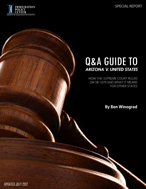There are roughly 1.8 million immigrants in the United States who might be, or might become, eligible for the Obama Administration’s “deferred action” initiative for unauthorized youth brought to this country as children. This initiative, announced on June 15, offers a two-year, renewable reprieve from deportation to unauthorized immigrants who are under the age of 31; entered the United States before age 16; have lived continuously in the country for at least five years; have not been convicted of a felony, a “significant” misdemeanor, or three other misdemeanors; and are currently in school, graduated from high school, earned a GED, or served in the military. Within this population of potential beneficiaries, however, are three distinct groups:
1.) Those who are between the ages of 15 and 30 who are either in high school or already have high school diplomas. This group is immediately eligible for deferred action.
2.) Those between the ages of 5 and 14 who will be eligible at some point in the future if the deferred action initiative remains in place.
3.) Those between the ages of 15 and 30 who are not in high school and don’t have high school diplomas. Members of this group might be eligible for deferred action if they get a GED.
A previous IPC analysis described in detail the demographic characteristics of the first two of these groups of potential beneficiaries. This analysis captures the third group as well. More precisely, potential beneficiaries are broken down by age, gender, and nationality at the state and national level. In reviewing these numbers, it is important to keep in mind that they are approximations and not precise figures.Read more...
Published On: Tue, Oct 16, 2012 | Download File



